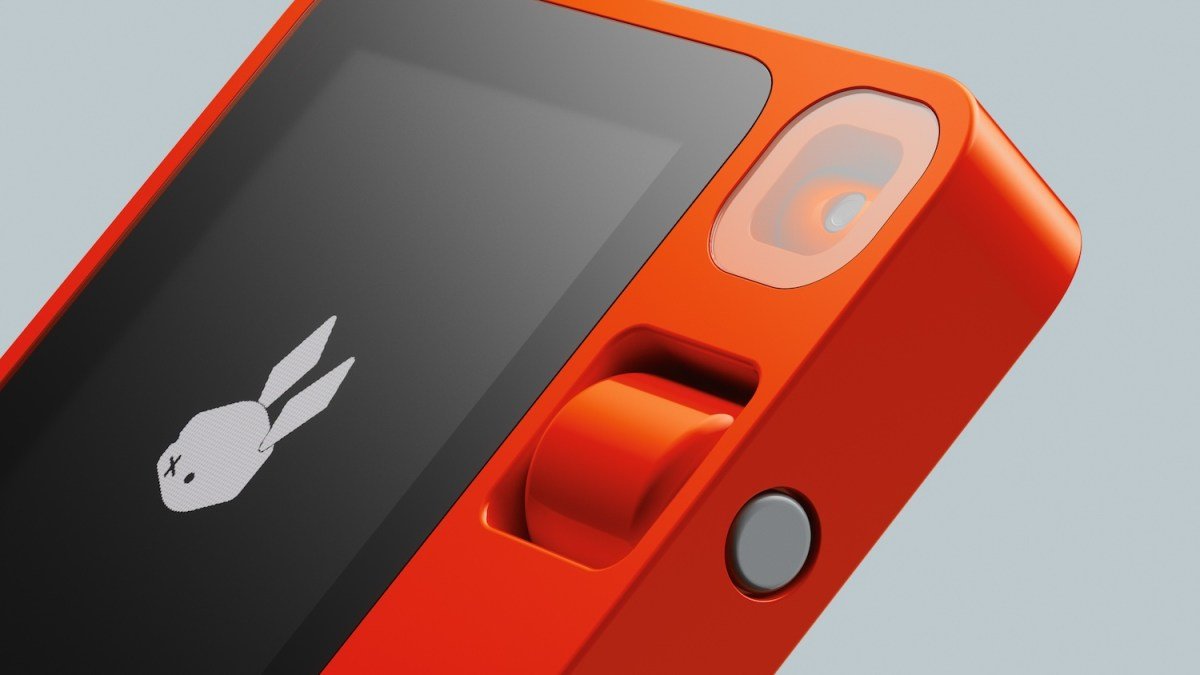Innovative AI-Enabled Gadgets at CES: Discover the Unique Rabbit R1
Amidst the sea of AI-enabled gadgets at CES, there is one that stands out not just for its high-vis paint job and unique form factor, but also for its dedication to improving user experiences. Meet the rabbit r1 (all lowercase, as they insist), a $200 device that is sure to change the way you interact with technology.
The company behind the rabbit r1 is taking leaps and bounds to ensure that their device stands out in the market. According to founder and CEO Jesse Lyu, the r1 aims to solve the problem of needing to constantly pull out and unlock your phone for simple tasks like booking a ride or finding a place to eat. “We’re not trying to kill your phone,” states Lyu, “but we want to provide a more efficient solution for getting things done.”
Effortlessly Efficient: How the Rabbit R1 Works
The concept behind the rabbit r1 is simple: it allows you to keep your phone in your pocket while you use the r1 for common tasks, such as ordering a car, looking up places to eat, or finding lodging options. The device utilizes natural language processing and a “large action model” (LAM) trained on countless screenshots and videos of popular apps to understand and respond to your commands. This means that instead of having to navigate different apps and interfaces, you can simply speak to the r1 and it will do the work for you.
Here are a few examples of what you can do with the rabbit r1:
- “Call an Uber XL to take us to the Museum of Modern Art.”
- “Give me a list of 5 cheap restaurants within a 10-minute walk of there.”
- “List the best reviewed cabins for 6 adults on Airbnb within 10 miles of Seaside, nothing more than $300 a night.”
The r1 follows your command and provides confirmation and any requested information within seconds, making your tasks a breeze.
The Difference: Rabbit R1 vs. Regular “AI Assistants”
You might be thinking, “Haven’t we already been using ‘AI assistants’ like Siri and Google Assistant for years now?” And you’re right – but there’s one major difference. According to Lyu, these “AI assistants” are more like “voice interfaces for custom mini-apps” rather than the advanced language models we’ve been seeing in recent times. The r1, on the other hand, is more akin to the “agent” type AIs trained on common user interfaces like websites and apps.
This giant leap in technology allows the rabbit r1 to do things that traditional “AI assistants” cannot. While traditional assistants can only perform tasks through official APIs and approved app connections, the r1 can navigate apps and websites just like a human would – by clicking on buttons and fields. This means that it can order a pizza from any app or website, not just through a dedicated API for a specific pizza chain.
Plus, the r1 has the ability to learn new apps by watching you use them. While this feature is not available at launch, rabbit claims that the r1 can learn from user behavior and adapt to new apps on its own. Additionally, the company has set up a platform called “rabbit hole” where users can provide their login credentials to activate services on the r1. This allows the device to use ordinary button presses to operate apps, without ever collecting or saving users’ personal information.
Made for Simplicity: The Rabbit R1 Design
Aside from its advanced technology, the rabbit r1 also boasts a sleek and eye-catching design. Designed by Teenage Engineering, known for creating top-of-the-line gadgets, the r1 features a bold red color and a unique magnetic/free-floating axle that allows it to spin and point in any direction.
The r1 also comes equipped with a screen, which serves the purpose of displaying visual information and confirming user inputs. While some may question the need for a screen on a device meant for voice commands, the team at rabbit believes that it adds to the simplicity and convenience of using the r1 instead of constantly pulling out and unlocking your phone.
Is this the Future of AI?
While the rabbit r1 may seem like a game-changing device, it also faces tough competition from tech giants like Google, Apple, and Amazon who are constantly advancing their own machine learning agents. However, Lyu is confident in the rabbit r1’s proprietary data and specific user experience, stating that “just because they can do it doesn’t mean we need to stop.”
With pre-orders already stacking up, it seems that the rabbit r1 has captured the interest and curiosity of many. Whether it will live up to the hype and become the future of AI remains to be seen, but for now, it’s definitely a gadget worth keeping your eye on.









[…] the company has unveiled its latest innovation, the Tack GPS Plus, an upgraded version of its GPS device for children and […]